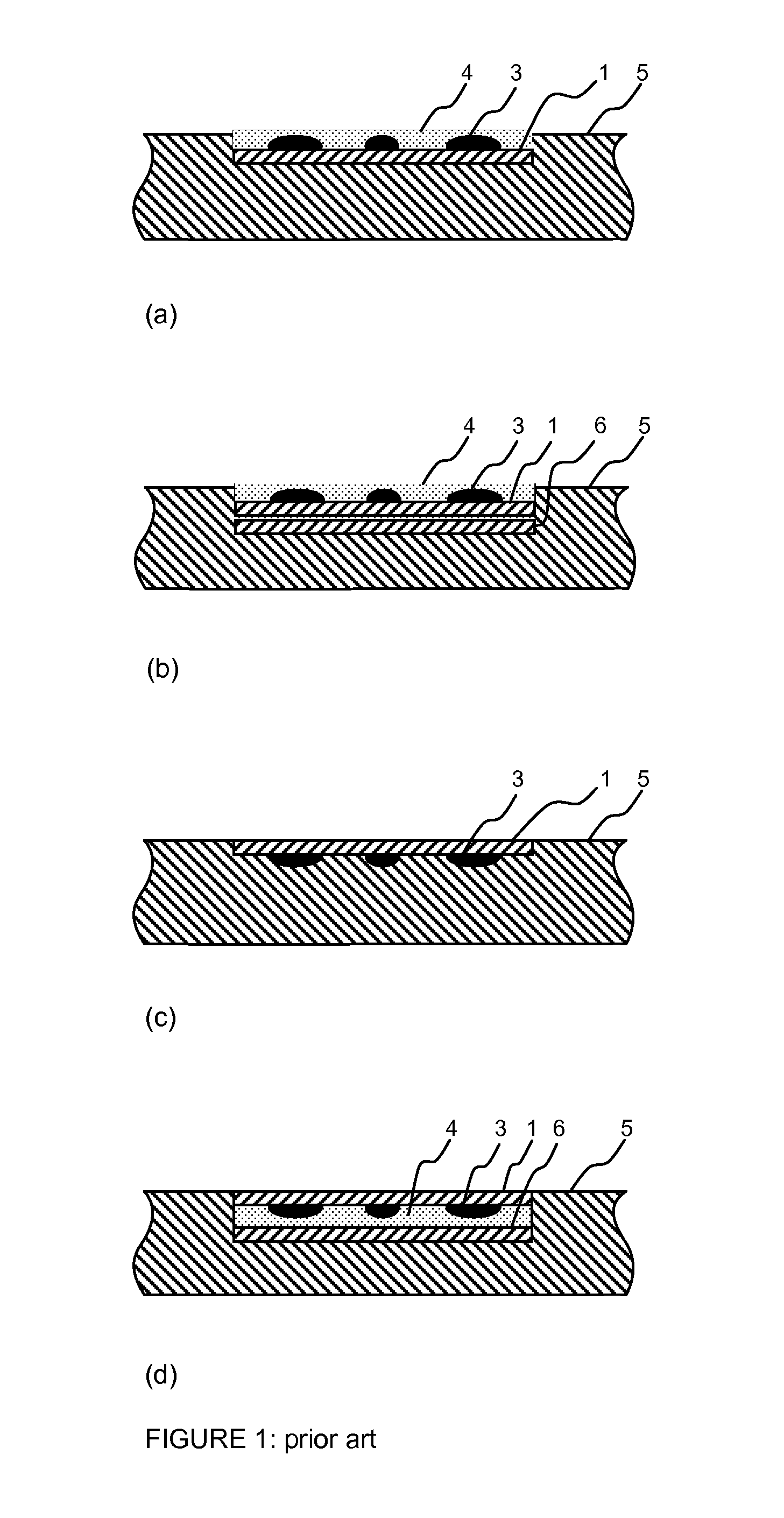In-mould label and method for manufacturing thereof
a mould label and label technology, applied in the field of mould labels, can solve the problems of more severe wear and tear of the object, and achieve the effects of reducing the risk of tearing, facilitating the adaptation of the label to the mould wall, and being highly resistant to tearing
- Summary
- Abstract
- Description
- Claims
- Application Information
AI Technical Summary
Benefits of technology
Problems solved by technology
Method used
Image
Examples
examples
[0050](a) IML Manufacturing
[0051]An IML according to the present invention was manufactured as follows. A decorative pattern was printed positively on a non pre-treated 50 μm PP solid film (1) well suited for traditional IML applications with traditional offset UV inks (UV rays drying). The printed pattern covered 100% of the label with a high density of ink.
[0052]A solvent based adhesive was applied on a second, 20 μm PP transparent solid film (2); the coated transparent film (2) was then dried through a 5 meters long drying tunnel and subsequently laminated onto the printed surface (1a) of the printed film (1). The thus obtained IML's were left 24 h to complete the curing / drying process.
[0053](b) Moulding of the IML
[0054]A number of labels were die-cut from the reel (22) and were transferred onto an inner wall of an injection mould designed for a food long life transparent PP-container. After injecting the part, the IML showed a perfect adhesion to the moulded part. No undesired e...
PUM
| Property | Measurement | Unit |
|---|---|---|
| thickness | aaaaa | aaaaa |
| thickness | aaaaa | aaaaa |
| thickness | aaaaa | aaaaa |
Abstract
Description
Claims
Application Information
 Login to View More
Login to View More - R&D
- Intellectual Property
- Life Sciences
- Materials
- Tech Scout
- Unparalleled Data Quality
- Higher Quality Content
- 60% Fewer Hallucinations
Browse by: Latest US Patents, China's latest patents, Technical Efficacy Thesaurus, Application Domain, Technology Topic, Popular Technical Reports.
© 2025 PatSnap. All rights reserved.Legal|Privacy policy|Modern Slavery Act Transparency Statement|Sitemap|About US| Contact US: help@patsnap.com



